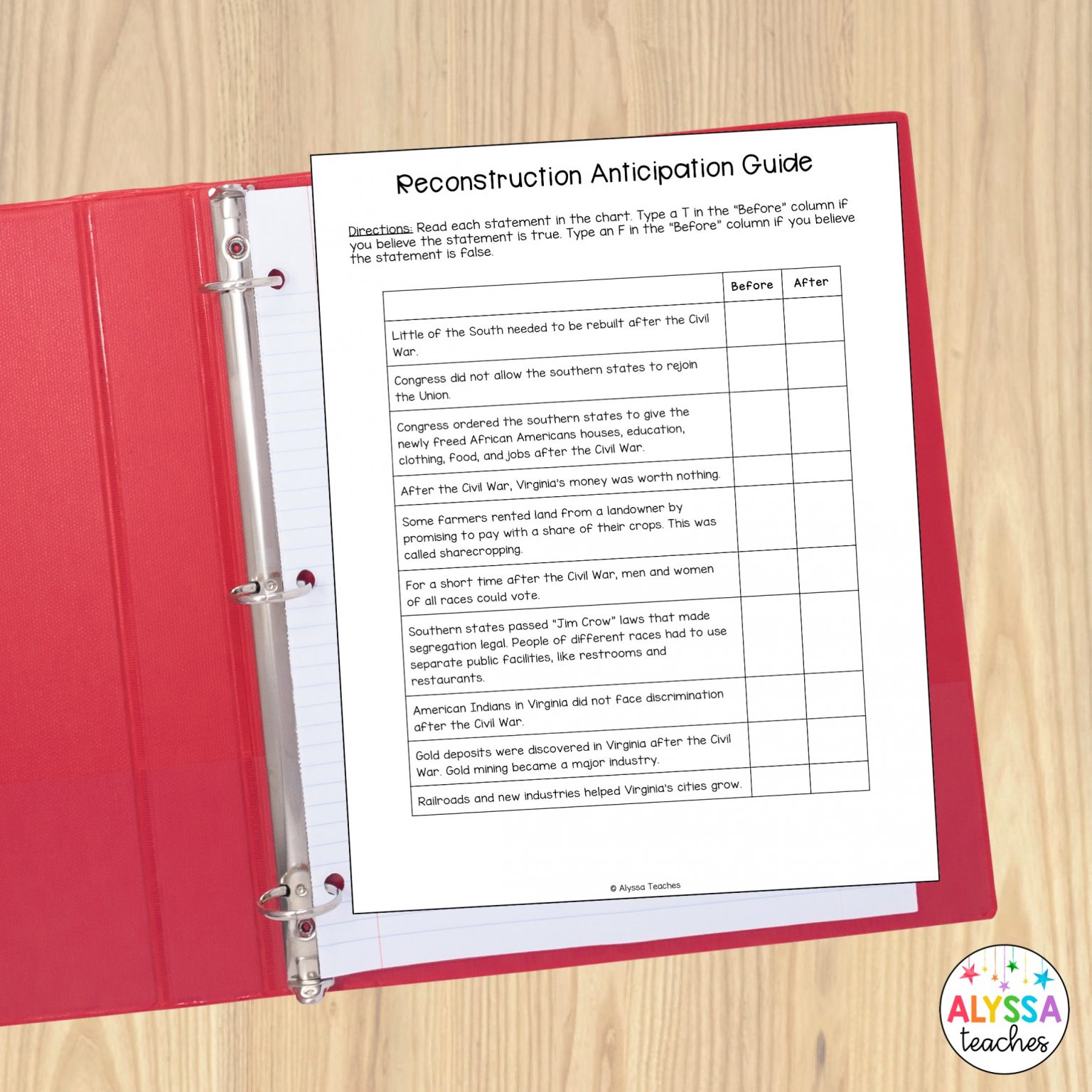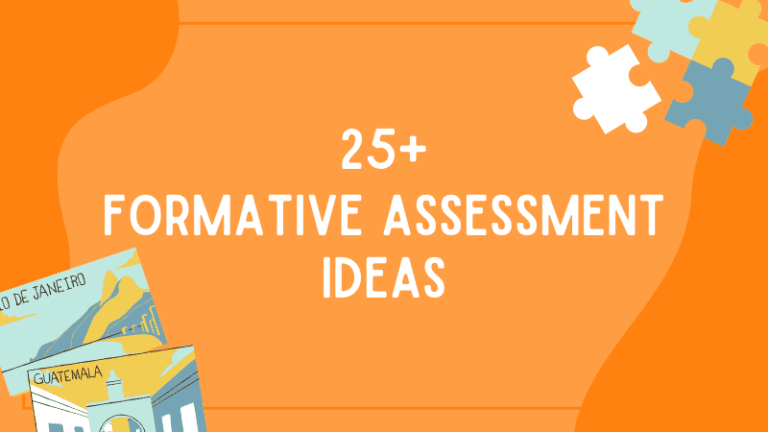When you hear the word assessment, do you automatically think “tests”? While it’s true that tests are one kind of assessment, they’re not the only way teachers evaluate student progress. In fact, there are three general types of assessments: diagnostic, formative, and summative. These take place throughout the learning process, helping students and teachers gauge learning.
Within those three broad categories, you’ll find other types of assessment, such as ipsative, norm-referenced, and criterion-referenced. Here’s an overview of all these assessment types, plus how and when to use them effectively.

Source: St. Paul American School
Diagnostic Assessments

Source: Alyssa Teaches
Diagnostic assessments are used before learning, to determine what students already do and do not know. This often refers to pre-tests and other activities students attempt at the beginning of a unit.
How To Use Diagnostic Assessments
When giving diagnostic assessments, it’s important to remind students these won’t affect their overall grade. Instead, it’s a way for them to find out what they’ll be learning in an upcoming lesson or unit. It can also help them understand their own strengths and weaknesses, so they can ask for help when they need it.
Teachers can use results to understand what students already know, and adapt their lesson plans accordingly. There’s no point in over-teaching a concept students have already mastered. On the other hand, a diagnostic assessment can also help highlight expected pre-knowledge that may be missing.
For instance, a teacher might assume students already know certain vocabulary words that are important for an upcoming lesson. If the diagnostic assessment indicates differently, the teacher knows they’ll need to take a step back and do a little pre-teaching before getting to their actual lesson plans.
Examples of Diagnostic Assessments
- Pre-test: This includes the same questions (or types of questions) that will appear on a final test, and it’s an excellent way to compare results.
- Blind Kahoot: Teachers and kids already love using Kahoot for test review, but it’s also the perfect way to introduce a new topic. Learn how Blind Kahoots work here.
- Survey or questionnaire: Ask students to rate their knowledge on a topic with a series of low-stakes questions.
- Checklist: Create a list of skills and knowledge students will build throughout a unit, and have them start by checking off any they already feel they’ve mastered. Revisit the list frequently as part of formative assessment.
Formative Assessments

Source: Teach From the Heart
Formative assessments take place during instruction. They’re used throughout the learning process and help teachers make on-the-go adjustments to instruction and activities as needed. These assessments aren’t used in calculating student grades, but they are planned as part of a lesson or activity. Learn much more about formative assessments here.
How To Use Formative Assessments
As you’re building a lesson plan, be sure to include formative assessments at logical points. These types of assessments might be used at the end of a class period, after finishing a hands-on activity, or once you’re through with a unit section or learning objective.
Once you have the results, use that feedback to determine student progress, both overall and as individuals. If the majority of a class is struggling with a specific concept, you might need to find different ways to teach it. Or you might discover that one student is especially falling behind and arrange to offer extra assistance to help them out.
While kids may grumble, standard homework review assignments can actually be a pretty valuable type of formative assessment. They give kids a chance to practice, while teachers can evaluate their progress by checking the answers. Just remember that homework review assignments are only one type of formative assessment, and not all kids have access to a safe and dedicated learning space outside of school.
Examples of Formative Assessments
- Exit tickets: At the end of a lesson or class, pose a question for students to answer before they leave. They can answer using a sticky note, online form, or digital tool.
- Kahoot quizzes: Kids enjoy the gamified fun, while teachers appreciate the ability to analyze the data later to see which topics students understand well and which need more time.
- Flip (formerly Flipgrid): We love Flip for helping teachers connect with students who hate speaking up in class. This innovative (and free!) tech tool lets students post selfie videos in response to teacher prompts. Kids can view each other’s videos, commenting and continuing the conversation in a low-key way.
- Self-evaluation: Encourage students to use formative assessments to gauge their own progress too. If they struggle with review questions or example problems, they know they’ll need to spend more time studying. This way, they’re not surprised when they don’t do well on a more formal test.
Find a big list of 25 creative and effective formative assessment options here.
Summative Assessments

Source: 123 Homeschool 4 Me
Summative assessments are used at the end of a unit or lesson to determine what students have learned. By comparing diagnostic and summative assessments, teachers and learners can get a clearer picture of how much progress they’ve made. Summative assessments are often tests or exams but also include options like essays, projects, and presentations.
How To Use Summative Assessments
The goal of a summative assessment is to find out what students have learned, and if their learning matches the goals for a unit or activity. Ensure you match your test questions or assessment activities with specific learning objectives to make the best use of summative assessments.
When possible, use an array of summative assessment options to give all types of learners a chance to demonstrate their knowledge. For instance, some students suffer from severe test anxiety but may still have mastered the skills and concepts and just need another way to show their achievement. Consider ditching the test paper and having a conversation with the student about the topic instead, covering the same basic objectives but without the high-pressure test environment.
Summative assessments are often used for grades, but they’re really about so much more. Encourage students to revisit their tests and exams, finding the right answers to any they originally missed. Think about allowing retakes for those who show dedication to improving on their learning. Drive home the idea that learning is about more than just a grade on a report card.
Examples of Summative Assessments
- Traditional tests: These might include multiple-choice, matching, and short-answer questions.
- Essays and research papers: This is another traditional form of summative assessment, typically involving drafts (which are really formative assessments in disguise) and edits before a final copy.
- Presentations: From oral book reports to persuasive speeches and beyond, presentations are another time-honored form of summative assessment.
Find 25 of our favorite alternative assessments here.
More Types of Assessments
Now that you know the three basic types of assessments, let’s take a look at some of the more specific and advanced terms you’re likely to hear in professional development books and sessions. These assessments may fit into some or all of the broader categories, depending on how they’re used. Here’s what teachers need to know.

Source: Skillsoft
Criterion-Referenced Assessments
In this common type of assessment, a student’s knowledge is compared to a standard learning objective. Most summative assessments are designed to measure student mastery of specific learning objectives. The important thing to remember about this type of assessment is that it only compares a student to the expected learning objectives themselves, not to other students.
Many standardized tests are criterion-referenced assessments. A governing board determines the learning objectives for a specific group of students. Then, all students take a standardized test to see if they’ve achieved those objectives.
Find out more about criterion-referenced assessments here.
Norm-Referenced Assessments
These types of assessments do compare student achievement with that of their peers. Students receive a ranking based on their score and potentially on other factors as well. Norm-referenced assessments usually rank on a bell curve, establishing an “average” as well as high performers and low performers.
These assessments can be used as screening for those at risk for poor performance (such as those with learning disabilities), or to identify high-level learners who would thrive on additional challenges. They may also help rank students for college entrance or scholarships, or determine whether a student is ready for a new experience like preschool.
Learn more about norm-referenced assessments here.
Ipsative Assessments
In education, ipsative assessments compare a learner’s present performance to their own past performance, to chart achievement over time. Many educators consider ipsative assessment to be the most important of all, since it helps students and parents truly understand what they’ve accomplished—and sometimes, what they haven’t. It’s all about measuring personal growth.
Comparing the results of pre-tests with final exams is one type of ipsative assessment. Some schools use curriculum-based measurement to track ipsative performance. Kids take regular quick assessments (often weekly) to show their current skill/knowledge level in reading, writing, math, and other basics. Their results are charted, showing their progress over time.
Learn more about ipsative assessment in education here.
Have more questions about the best types of assessments to use with your students? Come ask for advice in the WeAreTeachers HELPLINE group on Facebook.
Plus, check out 20 Creative Ways To Check for Understanding.


